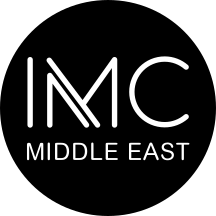Introduction
In today’s fast-changing world, organizations are under growing pressure to demonstrate not only compliance, but also resilience, accountability, and long-term value creation. Stakeholders : from investors and regulators to employees and communities are demanding that governance be more than a box-ticking exercise.
This is where ISO 37000: Governance of Organizations, the first global governance standard, brings clarity. It sets out guiding principles that help organizations align their decisions, strategies, and practices with a clear sense of purpose.
At IMC Middle East, we see ISO 37000 not as a technical manual, but as a framework that connects deeply with leadership and culture. By mapping it against Simon Sinek’s Golden Circle and our own STAR methodology, we can help boards and executives turn governance into a driver of sustainable performance.
The Golden Circle Lens
Simon Sinek’s Golden Circle is built on three simple but powerful questions: Why, How, and What.
-
Why → Purpose: Why does the organization exist? What is its reason for being?
-
How → Principles: How does it operate? Which values and behaviors guide its actions?
-
What → Outcomes: What does it deliver? Which strategies, systems, and structures make purpose tangible?
ISO 37000 mirrors this logic. At its heart is the Why — organizational purpose, aligned with stakeholder expectations. The How reflects principles such as transparency, accountability, and resilience. The What comes to life through governance structures, strategies, and oversight.
By framing governance through the Golden Circle, boards can move away from a compliance mindset and instead lead with clarity of purpose.
The STAR Methodology
At IMC, we translate governance principles into practice using our STAR methodology:
-
Strategy → Aligning governance with long-term vision and measurable goals.
-
Transparency → Building stakeholder trust through open, balanced communication.
-
Accountability → Ensuring clear roles, responsibilities, and ethical decision-making.
-
Resilience → Anticipating risks, seizing opportunities, and adapting to change.
Together, these four dimensions create a governance framework that is actionable, measurable, and future-oriented.
Sustainability as the Core Outcome
Both the Golden Circle and STAR converge on one central theme: sustainability.
-
For ISO 37000, sustainability is not just environmental — it is about creating long-term value for all stakeholders.
-
For IMC, sustainability is the natural outcome of combining purpose (the Golden Circle) with execution (STAR).
When organizations embed sustainability at the core, governance shifts from a static requirement to a living practice that drives resilience, trust, and competitiveness.
IMC’s Perspective
At IMC Middle East, our philosophy is simple: Your Vision, Our Precision. We partner with organizations to co-create governance frameworks that reflect their unique context while staying aligned with international best practices.
By combining ISO 37000, the Golden Circle, and our STAR methodology, we help boards and leadership teams:
-
Clarify purpose and values.
-
Strengthen transparency and accountability.
-
Build resilience against disruption.
-
Deliver sustainable outcomes for stakeholders.
This approach ensures that governance is not just about compliance — it is about enabling organizations to thrive with integrity.
Conclusion
Governance is evolving. It is no longer confined to regulatory checklists; it is about connecting purpose to practice. ISO 37000 provides the foundation, the Golden Circle inspires clarity, and the STAR methodology ensures execution.
At IMC, we believe the future belongs to organizations that embrace governance as a driver of trust, resilience, and sustainable value.
👉 Contact us to learn how IMC can help your organization translate governance principles into practice.

